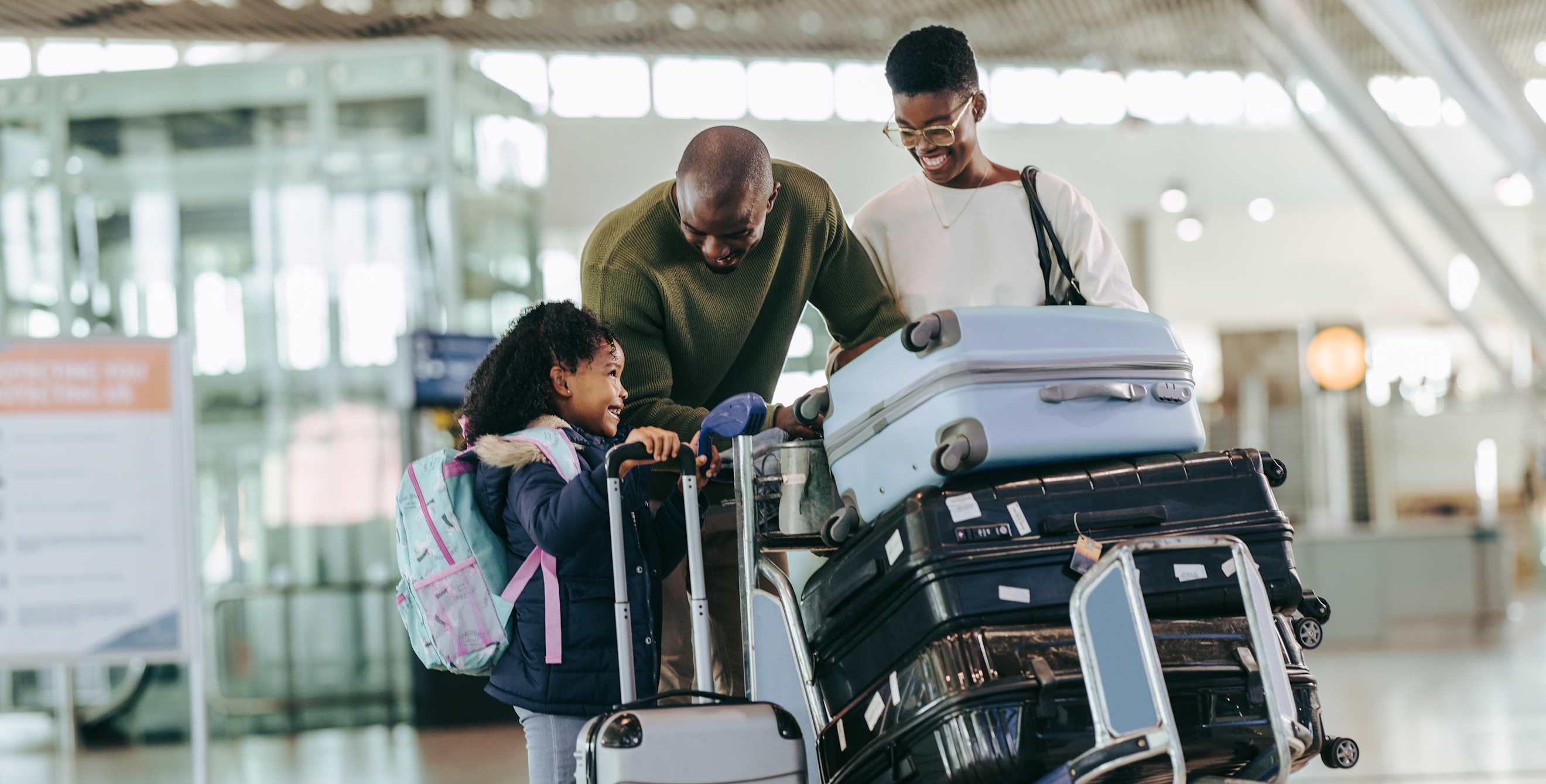
Can Bluetooth Trackers Really Help You Recover Lost or Stolen Items?
Here's why you may want to put a tracker in your checked luggage or inside your car.

Steve Harville was enjoying a night out with his wife when he realized his bag was nowhere to be found. It was right beside me just a minute ago, he thought. Or was it?
Fortunately, Harville had some high-tech insurance by his side, a new Apple AirTag he’d bought and activated only days before. With the AirTag concealed in his bag, it took only a few seconds on his phone to determine where it was—at the bar he’d left an hour earlier. “I took a car back and walked in pinging the tag,” he says. “They brought the bag right to me.”
Trackers are making it easier for people like Harville to recover lost items, improving the odds of getting back stolen gear, and even helping to keep tabs on wandering pets. Here’s how to get the most out of them.
How do trackers work?
While they’re commonly referred to as GPS trackers, most trackers—including Apple AirTag, Tile, and Chipolo—actually don’t use GPS at all, but rather use a low-power Bluetooth connection. This connection is used to pinpoint the tag’s location by detecting when another similar device is nearby. With enough devices in the field, a mesh of location information slowly develops: The bigger the device’s user base, the more likely a compatible device will be nearby, and the more accurate location tracking will be.
More advanced trackers such as those from LandAirSea and Tracki use a variety of technologies, including GPS, to locate their whereabouts, so they don’t need to rely on so-called crowdsourced location information like the trackers mentioned above. However, these trackers are much larger and require frequent recharging and a subscription plan, making them poor choices for typical consumer needs.
Regardless of the device, the mechanics of using a tracker are generally the same. Fire up an app on your phone if your item is missing and you’ll quickly see its last known location on a map. If it’s not showing up, you can put an item into “lost mode” or activate a “notify when found” feature and you’ll be alerted when it passes into range of a compatible device. Most tags can also be set to emit a beeping sound that helps you locate a lost item nearby.
Also note that Bluetooth-based trackers aren’t rechargeable, requiring a new coin-style battery about once a year. Your app will alert you when it’s time for a new one.
Finally, before you spring for a tracker, make sure your intended device doesn’t already have one of its own. Many products, including cell phones, earbuds, and automobiles, have the technology built in.

How can trackers be used?
The simple idea with trackers is that they make it easier to find anything that you might lose or which might be stolen. Some of the most common specific uses include:
- Drop a tag in your bag before you fly. If the airline loses your luggage, there’s a good chance you’ll be able to find it—though reporting on some egregious cases is beginning to cause some friction between angry fliers and airlines.
- Attach a tag to any expensive item that may attract theft. Portable technology items like laptops and cameras are common uses, though you will want to make the tag as discreet as possible. Thieves are aware of trackers now and will quickly remove any obvious ones, rendering them useless.
- Hide a tracker inside you car, motorcycle, or bicycle. Not only can a tracker help with recovering a stolen vehicle, you can also use the tracker for day-to-day life. “I recommend discretely attaching a tracker on a rear window closest to the sidewalk,” says privacy advocate and author Daniel Farber Huang, which will maximize its ability to reach the bluetooth-connected phones of people passing by. “This will help not just if the car is stolen but also if you forget where you parked.”
- Keep a tracker inside your passport holder and/or wallet. Airports and busy public places often have a high density of other people and devices with trackers, making recovery easier and faster.
- Attach a tracker to your pet’s collar. Ryan and Kirsty Lunn, full-time “van life” travelers, use a tag to keep tabs on their dog Lottie. “This way, we know where Lottie is at all times, and it provides us with some reassurance, especially when we're traveling in unknown locations,” says Kirsty.
- Tracker tags can even be used for peace of mind for caregivers of young children and cognitively impaired individuals, who may be prone to wandering off.
Smart Tip: If you believe your item was stolen, file a report with the police and include any tracking or location information you have. Never attempt to retrieve stolen items on your own.
Do trackers really work?
Bluetooth-based trackers aren’t perfect, as they rely on being near other members of the public at large in order to work. (If someone takes a stolen item to the middle of the woods, it’s unlikely to receive a tracker ping any time soon.)
That said, success stories of people using trackers are incredibly common, including tales of luggage quickly recovered, missing pets found, and cars and bicycles returned. In cases of theft, a tracker can make it much easier to prove a stolen device belongs to you, as police now understand the value of a tracker’s ping when the rightful owner is present.
All told, for as little as $20 each, trackers provide an upgraded level of insurance that is only getting better as more and more people adopt the technology. As Kirsty Lunn notes, trackers make it possible “to have a bit of reassurance about some of your most prized possessions.”